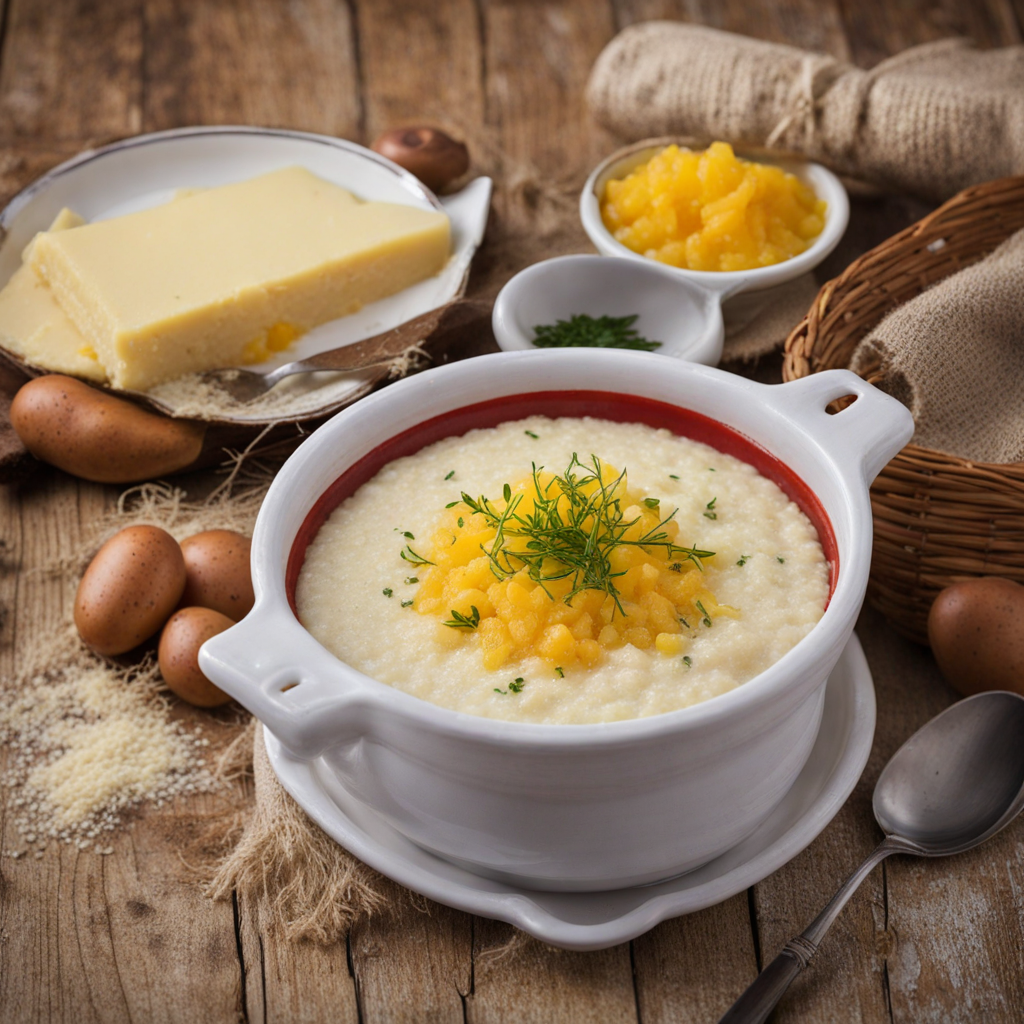Pite
Pite is a traditional dish from Kosovo that embodies the essence of Balkan comfort food. This savory pastry is typically made with thin layers of dough, similar to phyllo, which are filled with a variety of ingredients. The most common fillings include a mix of cheese, spinach, or potatoes, although some variations might incorporate meat or pumpkin. The balance of the crispy, flaky crust with the rich, flavorful filling makes every bite a delightful experience. It is often baked until golden brown, creating a satisfying crunch that contrasts beautifully with the tender interior. One of the most appealing aspects of pite is its versatility. Depending on the region and season, you might find pite made with seasonal vegetables, allowing for a fresh and vibrant taste. The dish is often enjoyed as a main course or as a snack, and it can be served hot or cold, making it perfect for any occasion. The simplicity of the ingredients allows each component to shine, while the dough provides a comforting base that holds everything together. Pite is not just a dish; it’s a cultural experience that brings people together. In Kosovo, it is common for families to gather and prepare pite together, passing down recipes and techniques through generations. Sharing a warm, freshly baked pite at the table encourages conversation and connection, making it more than just a meal. For those looking to explore the culinary landscape of Kosovo, tasting pite is an essential step towards understanding the heart and soul of its food culture.
How It Became This Dish
Pite: The Culinary Heritage of Kosovo #### Origins and Ingredients Pite, a traditional dish from Kosovo, is a savory pastry that embodies the rich culinary history of the region. Its origins trace back to the Ottoman Empire, which significantly influenced the Balkans' gastronomy from the 15th century until the early 20th century. The name "pite" is derived from the Turkish word "börek," which refers to a baked pastry filled with various ingredients. Traditionally, pite is made using thin layers of dough, similar to phyllo, which are filled with a variety of ingredients, the most common being cheese, potatoes, and spinach. The dough is rolled out into thin sheets, layered, and filled, then baked until golden brown and crispy. The simplicity of the ingredients belies the complexity of flavors that emerge during the baking process, making it a beloved staple across generations. #### Cultural Significance Pite holds a significant place in the hearts and homes of Kosovars, often served during special occasions, family gatherings, and communal feasts. Its preparation is a communal activity, bringing families together to roll out dough, prepare fillings, and share in the labor of love that goes into making this dish. In Kosovo, food is not just sustenance; it is a means of fostering relationships, preserving traditions, and expressing cultural identity. The dish is also symbolic of hospitality in Kosovar culture. When guests arrive, offering pite is a way to demonstrate warmth and generosity. It is often served alongside yogurt or salad, making it a versatile dish that can be enjoyed as a main course or a side. Moreover, pite is featured prominently during religious holidays and celebratory events. For example, during the feast of Eid, families prepare large quantities of pite to share with neighbors and friends, reinforcing social bonds within the community. The act of sharing food is deeply ingrained in Kosovar culture, and pite serves as a delicious vehicle for that tradition. #### Development Over Time The evolution of pite is reflective of the broader changes in Kosovo's society and its culinary landscape. While the basic recipe has remained consistent, regional variations have emerged over time, influenced by local ingredients and cultural exchanges. In rural areas, where agriculture plays a crucial role in daily life, pite is often made with seasonal ingredients. For instance, during spring, wild greens and herbs might be used, while autumn brings a bounty of pumpkins and squash. This adaptability not only showcases the agricultural diversity of the region but also highlights the ingenuity of home cooks who make use of what is available to them. During the 20th century, particularly during the tumultuous periods of conflict and political change, pite remained a comforting staple for many Kosovars. It became a symbol of resilience and continuity in the face of adversity. As communities were displaced, the recipes and techniques for making pite were preserved and passed down through generations, often adapting to new environments and available resources. As Kosovar people migrated to different parts of Europe and beyond, they took their culinary heritage with them, introducing pite to new audiences and expanding its reach. In the diaspora, pite has found a new life, often being made with ingredients that reflect the local culture while still honoring traditional methods. For example, in areas where spinach may be less accessible, cooks might substitute it with kale or other leafy greens. This creative adaptation is a testament to the dish's versatility and enduring appeal. #### Modern Interpretations Today, pite continues to thrive in Kosovo and beyond, with contemporary chefs and home cooks alike experimenting with fillings and presentations. While traditional versions remain popular, innovative variations have emerged, incorporating modern culinary techniques and flavors. Chefs have begun to play with the concept, introducing fusion elements by combining traditional fillings with international ingredients, such as feta with sun-dried tomatoes or mushrooms. Social media has also played a significant role in revitalizing interest in pite. Food bloggers and influencers showcase their pite creations, celebrating the dish's heritage while sharing new interpretations. This has led to a resurgence of interest among younger generations, who are eager to connect with their roots and explore their culinary heritage. In Kosovo, pite is now featured in restaurants that focus on traditional cuisine, where it is often served alongside other local specialties. This revival of traditional dishes is part of a broader movement to promote the culinary identity of Kosovo on the global stage. Food festivals and culinary events highlight local ingredients and showcase the diversity of Kosovar cuisine, with pite often taking center stage. #### Conclusion Pite is more than just a dish; it is a symbol of Kosovo's rich cultural heritage, embodying the resilience and creativity of its people. Its origins, rooted in the Ottoman influence, have evolved over centuries, adapting to the changing landscapes and tastes of the region. From communal gatherings to modern culinary innovations, pite remains a beloved staple that connects generations, celebrates hospitality, and preserves the gastronomic traditions of Kosovo. As the world continues to embrace global cuisine, pite stands as a testament to the power of food as a cultural expression. It invites all who encounter it to share in the stories, flavors, and traditions of a vibrant and enduring culinary heritage. Whether enjoyed in a bustling café in Pristina or a family kitchen in the diaspora, pite will always hold a special place in the hearts of those who cherish its history and the warmth it brings to the table.
You may like
Discover local flavors from Kosovo







